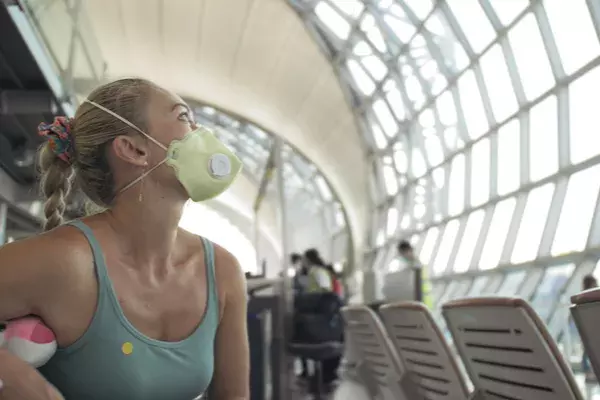07 December 2016 | Blog
4 trends changing passenger communications and what it means for you
07 December 2016 | Blog
4 trends changing passenger communications and what it means for you
From the IATA World Passenger Symposium in Dubai to ALTA Forum in Mexico, Phocuswright in Los Angeles to Trendwatching in London – over the past few months we’ve been jet-setting across the world, attending events and sharing our thoughts on the changing face of passenger communications within travel.
As technology and innovation redefines the passenger experience at an ever-increasing speed, what channels will your customers take to next? How will they expect you as a travel provider to communicate with them?
Here are the 4 things happening right now, that we think are going to redefine passenger communications in the future. And - most importantly – what this means for you.
1) The digital experience is king
With the mainstream adoption of virtual reality, chatbots, and machine learning, technologies are seeing a fundamental shift away from an internet in which information is currency, to one where digital experiences are the most sought after exchange.
What does this mean for you? In a world where consumers use their digital life to define them, your role as a travel provider is to align the physical and digital experience to provide a seamless journey at every stage of travel. By combining existing technologies and services, you can create innovative new services and products that address your customer’s every travel need.
Source: SITA Global Passenger Survey 2016. Annotated by 15below.
2) Communication is channel agnostic
Gone are the days when you couldn’t be on the internet at the same time as the telephone (ah, dial-up!). The days when SMS or a phone call was the only form of mobile communication and when you expected most information via post.
Fast-forward to today, and you’ll see that communication no longer follows these linear patterns. Instead, we jump from channel to channel, transferring conversations from Facebook Messenger, to WhatsApp to Email (and the occasional phone call!).
What does it mean for you? As technology has evolved, so has the way you need to interact with your customers. Travel companies must be channel-agnostic, delivering information and offers across any number of channels – SMS, social media, email or voice – based on what your customers want and where they are in their journey.
By joining these cross-channel conversations, you build a clearer picture of the true customer experience (and can highlight any gaps). This allows you to gather background information on the customer and break down organisational silos to handle any incoming enquiries accordingly.
3) Travellers will continue along the path of least resistance
As technology usage grows, expectations speed up (exponentially!) and the way we do things change. We create new technologies to fulfil these expectations, and in turn, our behaviours change as result.
This results in a continuous cycle of technology improvement and renewal to follow the path of least resistance – the easiest journey – physically or digitally, to get from Point A to Point B.
What does it mean for you? Part of making the booking and travel process easier for your customers is to maintain the path of least resistance between their journey and you. Make it easy for them to manage their trip, book their ancillaries and move through the airport – become the ‘personal concierge’ in their pocket, ready to address their every need.
4) Human relationships + machine automation = unstoppable force
When humans and machines first started interacting, there was fear. Fear that they would take our jobs, control society and change the way we do things forever. Whilst the latter is certainly true – the way we do things is vastly different compared to just 20 years ago - the notion that machines are taking away human jobs is not. Instead, humans and machines have found a way to work together to enhance our lives and our work.
‘Centaurs’ combine the best of human and machine traits to solve complex problems and automate tedious tasks – an ideology that has since seeped into mainstream industries like retail, travel and even TV.
The idea – and use of – automation is nothing new, from schedule change to check-in processing, intelligent software can already automate the operational tasks that plague staff across the travel industry.
As technology continues to grow smarter (at an alarmingly fast rate!), we will be able to build upon and expand this human + machine relationship, tackling tasks of ever-growing complexity to remove problems like schedule change and even IROPs disruption.
What does it mean for you? By freeing your staff from tedium, you enhance their role in building customer relationships. They can provide irreplaceable value to every passenger’s journey, backed up with the data and insight captured by machines – that relationship you build with your customers is the difference between a single transaction and a growing travel community.



